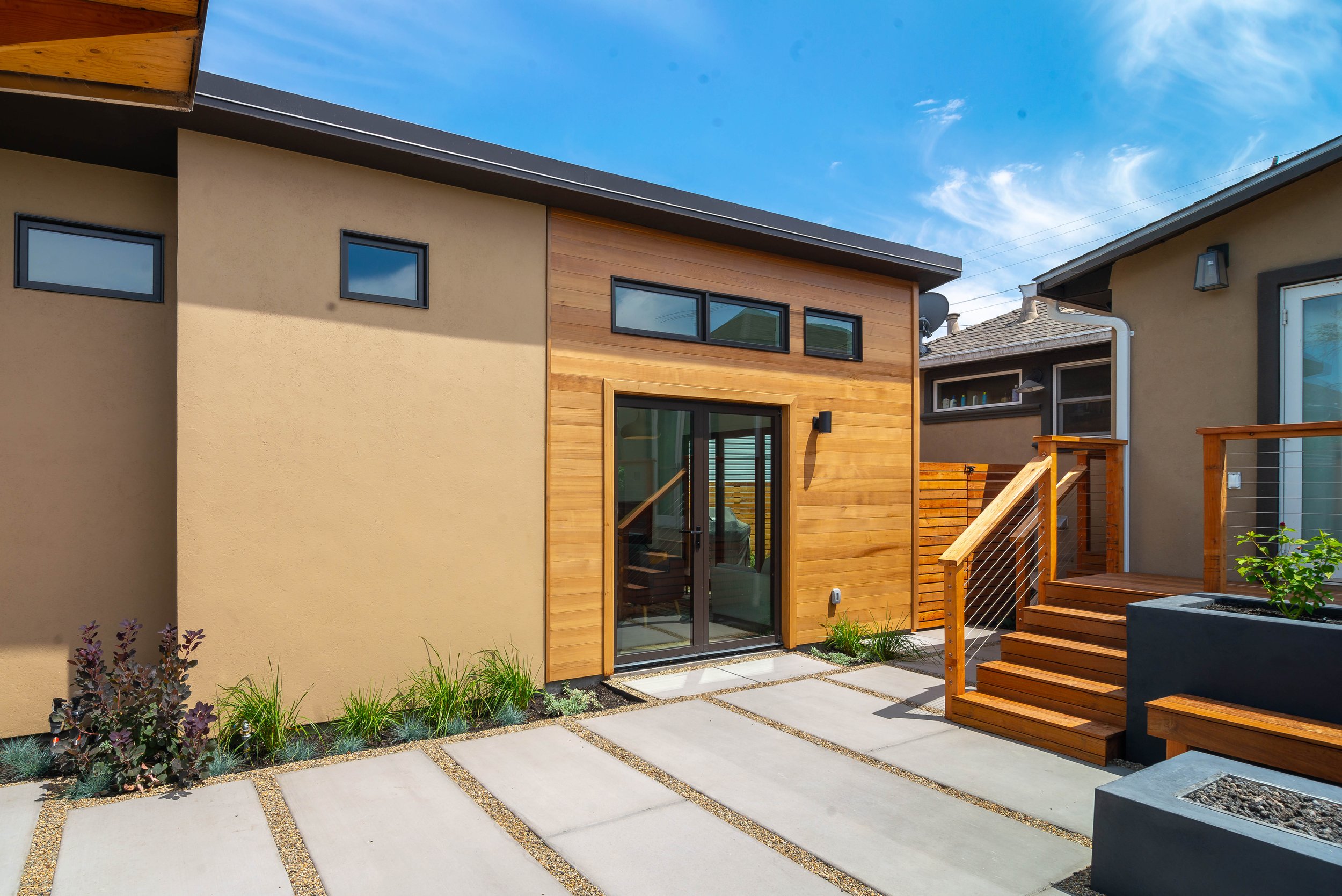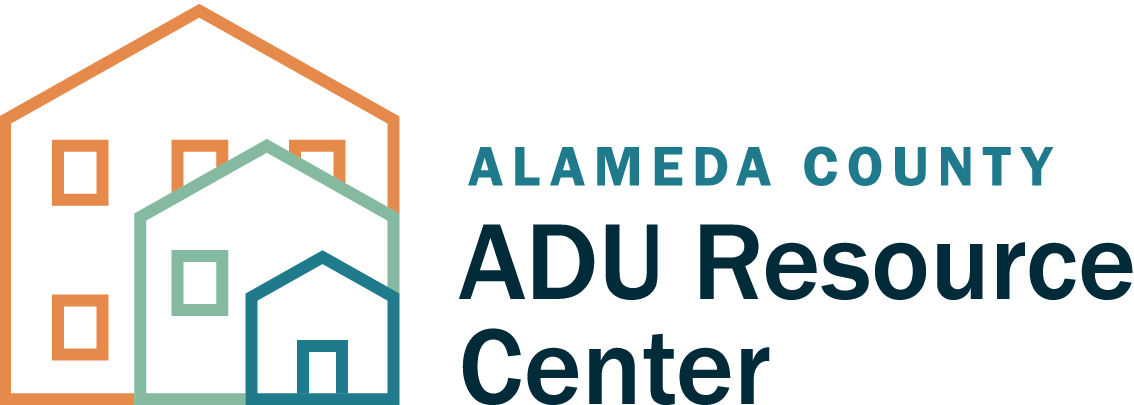
ADU 101
Learn the basics before you start
ADU Crash Course
Learn about ADU types, where they can go and the process of building an ADU.
What is an ADU?
Accessory Dwelling Units (ADUs) come in many shapes and sizes but are always a self-contained home that is smaller than the main house and legally part of the same property.
They must have a kitchen, bathroom, and place to sleep, and can range from small efficiency studios to 1,200 square foot homes with multiple bedrooms. You may know them by their other names too, like granny flats, backyard cottages, in-law units, or converted garage or basement apartments.
Junior Accessory Dwelling Units (JADUs) are smaller units under 500 square feet inside the main house. They must include an efficiency kitchen, have their own entryway, and may or may not share a bathroom with the main house.
Types of ADUs
There are many different types of ADUs. Sometimes they fit into multiple categories (like an attached ADU from converted space).
ATTACHED ADU
New structure sharing at least one wall with a home/building (may include converted space)
DETACHED ADU
New freestanding structure, like a backyard cottage (site-built or modular/prefab/manufactured)
JADU (JUNIOR ADU)
Converted or new space in an existing or new home that is under 500 square feet
CONVERSION ADU
Converted space within an existing home (like a garage, attic, or basement)
MULTIFAMILY
New attached, detached, or conversion ADU on a multifamily property
Project Timing
Building an ADU is an investment of time as well as money. Most projects take one to two years to complete, with interior conversions being the fastest.

There are two major approaches when building an ADU
Site-Built
A traditionally constructed ADU designed to your preferences and property and built on site (AKA “stick-built”). This option allows for a lot of customization and smaller changes to be made throughout the construction process.
Modular/prefab/manufactured
Partially or mostly built in a factory, then shipped to your site be placed on a foundation. Some companies will provide a “turnkey” service that includes help with permitting and all on-site construction, from laying the foundation to utility hookups. If not, you’ll need to hire additional professionals to help.
ADU 101 FAQs
-
Accessory Dwelling Units (ADUs) come in many shapes and sizes but are always a self-contained home that is usually smaller than the main house and legally part of the same property. They must have a kitchen, bathroom, and place to sleep, and typically range from studios under 500 square feet to 1,000-square-foot homes with multiple bedrooms.
Junior Accessory Dwelling Units (JADUS) are within the footprint of your home (or attached garage) and less than 500 square feet. They can share a bathroom with the main home and have an efficiency kitchen (sink, cooking appliance, fridge, and small counter). Construction costs for JADUs are typically much lower. In most cases, the property owner must live on site in either the main home or the JADU.
-
An Attached ADU can be new or converted from an interior space as long as it shares at least one wall with the primary house.
A Detached ADU is a freestanding structure that can be new or converted from an existing structure, such as a garage or barn.
-
This site walks you through each part of the ADU process, from gathering initial inspiration and learning what you can build through construction and becoming a landlord or moving in.
You can also use our Process-at-a-Glance resource for an overview of the process and some initial issues to consider as you get started.
Why build an ADU?
Building and renting an ADU is truly a community service — ADUs often provide homes for the local workforce and small families who have difficulty finding local housing that meets their needs.
There are many reasons to build an ADU — for housing multiple generations of family on the same property, rental income, flexibility over time, safe and convenient housing for friends or local workers, and many others.
A home as you age
A nearby home for caregivers or for aging adults who want to rent their main home and live in their ADU.
Rental income
A steady source of income for retirement or a rainy day. Can come from the ADU or the main home.
Multigenerational Housing for friends and relatives
A nearby home for adult children, aging parents and relatives, or loved ones with special needs.
Safety
An extra set of eyes and hands on the property for safety, when you travel, upkeep and more.
Environmental and local benefits
More small-scale living and rentals for workers supports our environment and businesses while reducing commutes.
Ready to get started?
We have resources to help you at every step along the way, from initial thoughts through move-in.
GET STARTED
Next →











